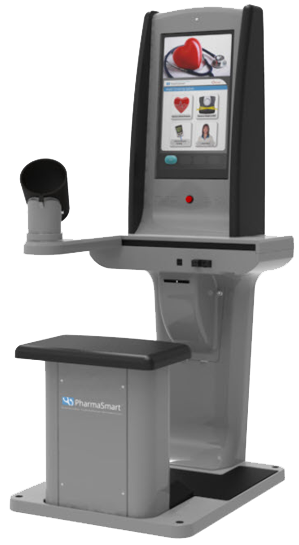
Industrial Design
Contact Us For A Consultation
Our Approach to Industrial Design for Medical Devices
Form Follows Function is the key principle for our Industrial Design team. Our award-winning designers create beautiful designs, but their creativity does not violate the laws of Physics, Chemistry, Optics, or Engineering. We consider pre-design market research, ideation, and rapid concept development are key to a successful design. Our team creates multiple rapid prototype mockup models to collaborate with the client for validation of their design. We understand the differences between low and high-volume manufacturing requirements, exploring all viable options to meet manufacturing goals and the target cost of goods. We are also hyper-aware of the latest aesthetic trends in the marketplace and provide relevant designs for our customers. Our approach to design is a balanced one, focusing on defining relevant problems and issues, then determining solutions based on human factors and usability, balanced with keen sensitivity to aesthetics and details.
8 Key Factors on How Our Designers Approach Industrial Design
- Research: Projects begin with research into competitor’s offerings and similar devices. We examine the styling, use metaphors, features, and performance to understand what customers will see as the predicate to judge any new device against.
- User needs: We define the users, use environment, and user interfaces necessary to operate the device. We establish the safety and regulatory requirements applicable to the device. We also design to the IEC 60601-1-6 standard for usability, IEC 60601 series for Medical Device Safety, and IEC 61010 series for Laboratory and IVD Safety.
- Ideation: Having established the “problem,” we next develop a range of solutions, embodied in multiple design concepts. Together with our clients, we narrow down the number of candidate designs using sketches, renderings, and simple models.
- Iterative Design: Chosen concepts are further developed, adding details and features. Successive design / build / evaluate iterations reduce the number of choices to one in each design option.
- Construction: Our designers aid in the overall process by fabricating mockups, models, and prototypes throughout the design process. We use additive manufacturing, machining, and hand-shaping processes to make examples of features or whole devices to communicate the design intent and user experience.
- Presentation: When it’s time for client input, our designers prepare presentations that aren’t just pretty – they also embody the technical information clearly and accurately. Our design center includes a 90” display we can use to show large devices such as cart-based diagnostic or surgical systems at 1:1 scale. Our designers are also prepared to answer client questions and back up opinions with research and testing, as well as designing for the IEC 60601-1-2: EMC for testing, and IEC 61326 series for Laboratory and IVD EMC.
- Evaluation / refinement: An important part of optimizing a design is critical review. Within our team, we maintain open, honest relationships that make it possible to criticize a design element and have that criticism accepted and acted upon. This extends to our client’s input – no comment is ignored, and none of our cows are sacred.
- Verification / validation: Designers have an important part in the verification and validation of a medical device – Human Factors. Most devices cannot be approved without a formal definition of HF requirements, a design that satisfies these requirements, and studies that demonstrate that in the use environment.
DeviceLab’s Industrial Design Skills
Our ID staff has a wide skill set developed over numerous medical projects, ranging from sketching, model fabrication, 3D modeling, rendering and animation, graphic arts, logo & typography to research, testing, and documentation.
- Competitive Products Research / Analysis
- Styling and Cues Research / Analysis
- Usability and Human Factors Analysis
- Formal Human Factors Studies (Formative, Summative)
- Cost of Goods Estimation
- Manufacturing Process Option Evaluation
- Concept Sketching
- Concept Renderings
- Concept Mockups / Models
- Master Model CAD Development (SolidWorks)
- Packaging Design
- Branding
- Marketing Renderings
- Marketing Animations
- Design Documentation / Style Manuals

Tools and Links: DeviceLab designers use sketches, models, and SolidWorks for design development. 3D renderings, animations, and simulations done in SolidWorks are used to communicate designs for user and client feedback, and mockups or prototypes are used in Human Factors Studies. Designers create the SolidWorks Master Model, which mechanical engineers then use to add internal structures and part details while respecting the aesthetic established by ID. Our Industrial Designers also cooperate with our UI/UX designers to integrate displays and controls within an overall design using SolidWorks.
Testing: Throughout development, mockups and prototypes are employed for evaluating use metaphors to select among design options. DeviceLab designers are also responsible for Human Factors studies required for product approval, including a Formative Study to understand use patterns and feature options, and a Summative Study to demonstrate that the device can be safely and effectively used.
Manufacturing: While DeviceLab MEs and EEs are more responsible for the manufacture of the device, our IDs help set the stage by making preliminary choices for the construction of the device and setting the style in material and finish selections. The experience of our designers and the close working relationship they have with our engineers means that early choices don’t have to be thrown out later on and that the design aesthetic remains intact as the design becomes fully detailed.
Documentation: DeviceLab designers produce documentation setting out the form, finish, colors, and decoration of the final device, but they also produce studies early on that help the team settle on a design direction, such as competitive analysis and styling cues research. Much of their input on form and construction of the device enters into the mechanical drawing package rather than being a separate output. Our designers will often produce a style manual to accompany a device, which is useful in developing packaging, labeling, and promotional materials. We also follow standards such as ISO 14971 to avoid any risk management errors in the design process.








